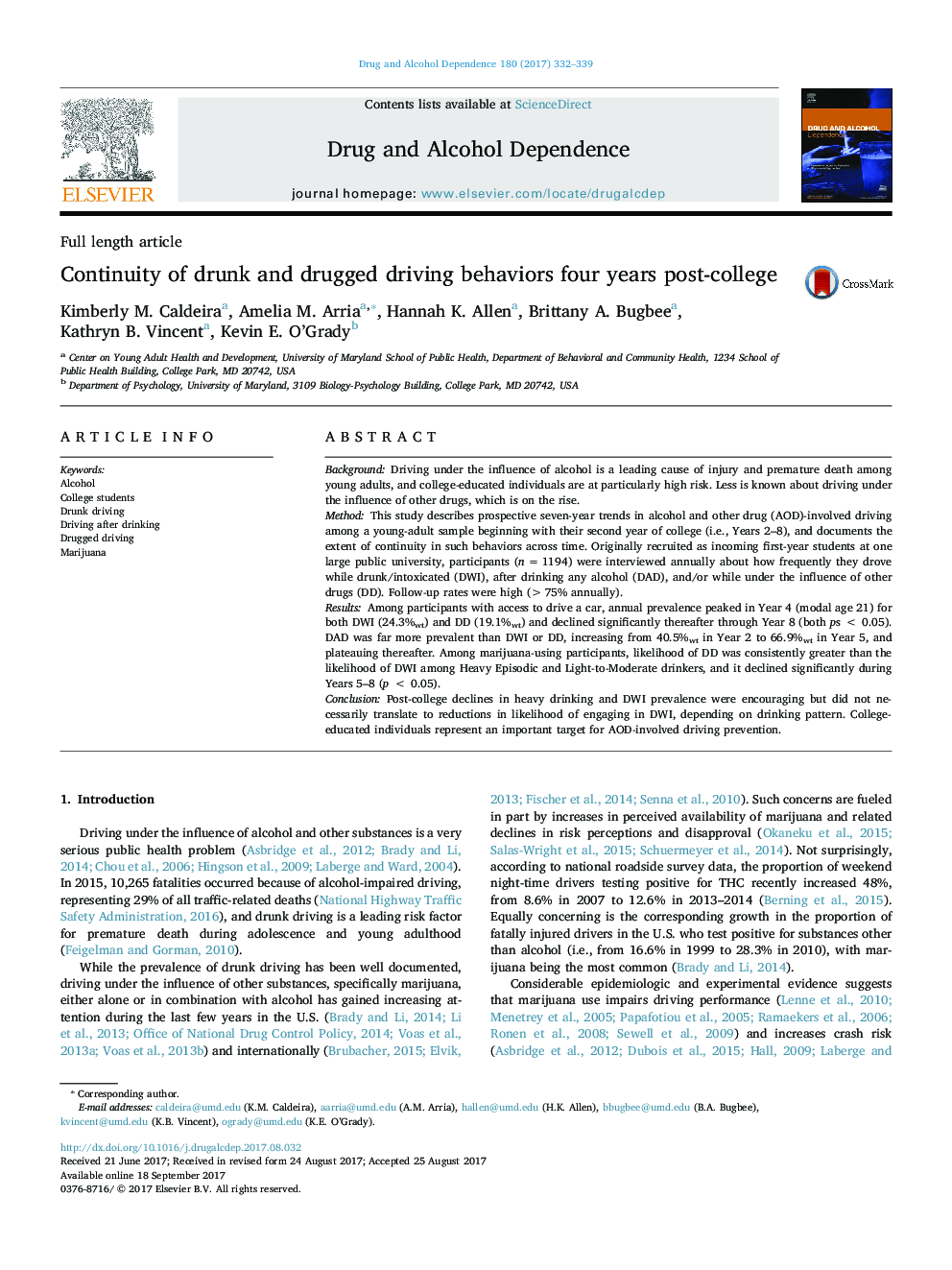| Article ID | Journal | Published Year | Pages | File Type |
|---|---|---|---|---|
| 5119872 | Drug and Alcohol Dependence | 2017 | 8 Pages |
â¢Annual prevalence peaked at modal age 21 for both DWI (24.3%wt) and DD (19.1%wt).â¢Significant declines in both DD and DWI were observed starting around modal age 22.â¢DWI among Light-to-Moderate and Heavy Episodic drinkers did not significantly decline.â¢Driving after drinking any alcohol (DAD) increased significantly during college and plateaued at 65%wt by modal age 22.â¢The drug most often endorsed during DD was marijuana.
BackgroundDriving under the influence of alcohol is a leading cause of injury and premature death among young adults, and college-educated individuals are at particularly high risk. Less is known about driving under the influence of other drugs, which is on the rise.MethodThis study describes prospective seven-year trends in alcohol and other drug (AOD)-involved driving among a young-adult sample beginning with their second year of college (i.e., Years 2-8), and documents the extent of continuity in such behaviors across time. Originally recruited as incoming first-year students at one large public university, participants (n = 1194) were interviewed annually about how frequently they drove while drunk/intoxicated (DWI), after drinking any alcohol (DAD), and/or while under the influence of other drugs (DD). Follow-up rates were high (>75% annually).ResultsAmong participants with access to drive a car, annual prevalence peaked in Year 4 (modal age 21) for both DWI (24.3%wt) and DD (19.1%wt) and declined significantly thereafter through Year 8 (both ps < 0.05). DAD was far more prevalent than DWI or DD, increasing from 40.5%wt in Year 2 to 66.9%wt in Year 5, and plateauing thereafter. Among marijuana-using participants, likelihood of DD was consistently greater than the likelihood of DWI among Heavy Episodic and Light-to-Moderate drinkers, and it declined significantly during Years 5-8 (p < 0.05).ConclusionPost-college declines in heavy drinking and DWI prevalence were encouraging but did not necessarily translate to reductions in likelihood of engaging in DWI, depending on drinking pattern. College-educated individuals represent an important target for AOD-involved driving prevention.
